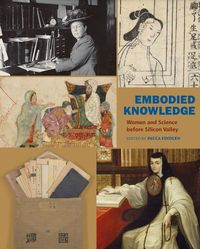Major
Bachelor of Arts in History
The History Department has revised the degree requirements for new majors declaring after September 1, 2022.
Current majors who declared prior to September 1, 2022, may choose whether to complete the major in the track system, or in the revised system detailed below. Current majors who declared prior to September 1, 2022, and who have chosen to complete the major according to the track system, should consult the archived AY 2021-22 Bulletin for degree requirement information. Please reach out to kdowding [at] stanford.edu (Kai Dowding) with any questions.
Prerequisites for the Major
Before declaring the History major, students must take at least one class within the Stanford Department of History, taught by a Stanford History instructor.
Degree Requirements Overview
Completion of the major requires planning. History majors should plan to meet with their faculty advisors twice yearly, once in the Autumn and once in the Winter or Spring quarters. These meetings should take place within the first three weeks of the quarter, before the final study list deadline.
- Students must complete a minimum of 13 courses and 63 units in the major.
- Courses counting toward the major must be taken for 3-5 units and a letter grade, and the student must maintain a grade point average (GPA) in History courses of 2.0 or higher.
- At least 11 courses must be taken from within the Stanford Department of History. Transfer students and those who study abroad may be granted exemptions from this requirement at the discretion of the Director of Undergraduate Studies.
- At least six quarters of enrollment in the major. Each candidate for the B.A. in History should declare the major by the Autumn Quarter of the third year of study or earlier, if possible. Students declaring with fewer than six quarters remaining in their undergraduate career need to submit a petition for exemption (also available in the History Office), accompanied by a plan for completing the major.
- One HISTORY 299S Undergraduate Directed Research and Writing taken for 3-5 units and for a letter grade may be applied toward the 13 courses required for the B.A. in History.
- Advanced Placement credits do not fulfill any major requirements.
- The department encourages students to acquire proficiency in foreign languages and study at one of Stanford's overseas programs. Such studies are not only valuable in themselves; they can provide an opportunity for independent research and a foundation for honors essays and graduate study.
Degree Requirements In Depth
Completion of the major requires planning. History majors should plan to meet with their faculty advisors twice yearly, once in the autumn and once in the winter or spring quarters. These meetings should take place within the first three weeks of the quarter, before the final study list deadline.
History majors are required to complete a minimum of 63 units (i.e. a minimum of 13 courses) to include:
- One Sources and Methods seminar (HISTORY 1S-99S).
- Sources and Methods seminars constitute the department's 'skills' course and are oriented around two primary objectives: first, to introduce students to a wide range of historical sources and methodologies; second, to teach students how to research and write a "history paper." This latter writing component is typically broken down into the three classic types of “history paper”: analysis of a primary source, analysis of historians in conflict, and argument-based research paper.
- The Sources and Methods seminar should be taken as early as possible in a student's course of study, ideally before taking a Doing History course (below) and certainly before enrolling in HISTORY209S Research Seminar for Majors (below). First-year students are welcome.
- One "Doing History" course (HISTORY 200x).
- The "Doing History" series consists of rigorous undergraduate colloquia that introduce the practice of history within a particular field or thematic area.
- The "Doing History" colloquium should be taken early in a student's course of study, ideally before the end of the sophomore year, and certainly before HISTORY209S Research Seminar for Majors (below). First- year students are welcome. If a student would like to take more than one “Doing History” colloquium, the additional colloquium can count toward the 200-level undergraduate colloquium requirement.
- Completion of the Writing in the Major requirement (HISTORY 209S).
- In the Research Seminar for Majors, students write a ca. 20 page research essay based on original research and revision. Students will conduct substantial original research in the libraries and submit at least two drafts (a rough draft and a final draft) of the essay, with substantial revision in response to instructor feedback. This course may be taken in either the junior or senior year, but not before completing the Sources and Methods seminar and Doing History colloquium requirement.
- One capstone option.
- This rule applies to undergraduates matriculating as first-year students in AY 2021-22 or later and graduating in AY 2024-25 or later, and to transfer students who enter in AY 2022-23 or AY 2023-24 and plan to graduate in AY 2024-2025 or later. Undergraduates who matriculated as first-year students prior to AY 2021-22, or who entered as transfer students prior to AY 2022-23, are not required to complete a capstone, but must still fulfill the minimum of 13 courses and 63 units in the major.
- Please note that the honors thesis or a paper revision do not contribute units toward the major, so students who choose to complete an honors thesis or a paper revision for the capstone requirement must take an additional course to reach the 13 course and 63 unit minimum.
- For a list of capstone options, please see the History Bulletin
- At least nine additional courses to total a minimum of 63 units, to include:
- Two 200-level undergraduate colloquia (HISTORY 201-298)
- Two courses at any level in pre-1700 history
- Four courses in a geographical, chronological, or thematic concentration (See "Concentrations" below)
- At least one additional course to reach a minimum of 13 courses and 63 units in the major
For more information, please see our entry in the Stanford Bulletin
Concentrations
History majors must complete four courses in a geographical, chronological, or thematic concentration of their own choosing. Students should select a concentration in consultation with their advisor, and some suggested starting points are outlined below.
History majors have concentrated in areas such as Africa, Asia, Eastern Europe and Russia, Europe before 1700, Europe since 1700, Jewish History, Latin America, Science and Medicine, The Middle East, The United States, International History, and Comparative Empires and Cultures.
For students interested in pursuing thematic concentrations, the Department has identified several suggested clusters of courses with shared intellectual, social, or methodological concerns. These clusters are guidelines and possibilities that we hope will inspire students in their course selection, rather than constrain them. Courses within each cluster are viewable on the Courses page.
- Law and Public Policy
- Economics/Political Economy
- Global Affairs/International Relations
- Environment, Science, Medicine, and Technology
- Religion and Intellectual History
- Race and Ethnicity
- Gender and Sexuality
- Activism, Public History, and Service
Students are also welcome to craft a concentration of their own design, in consultation with their advisor.
Department Bookshelf
Browse the most recent publications from our faculty members.




